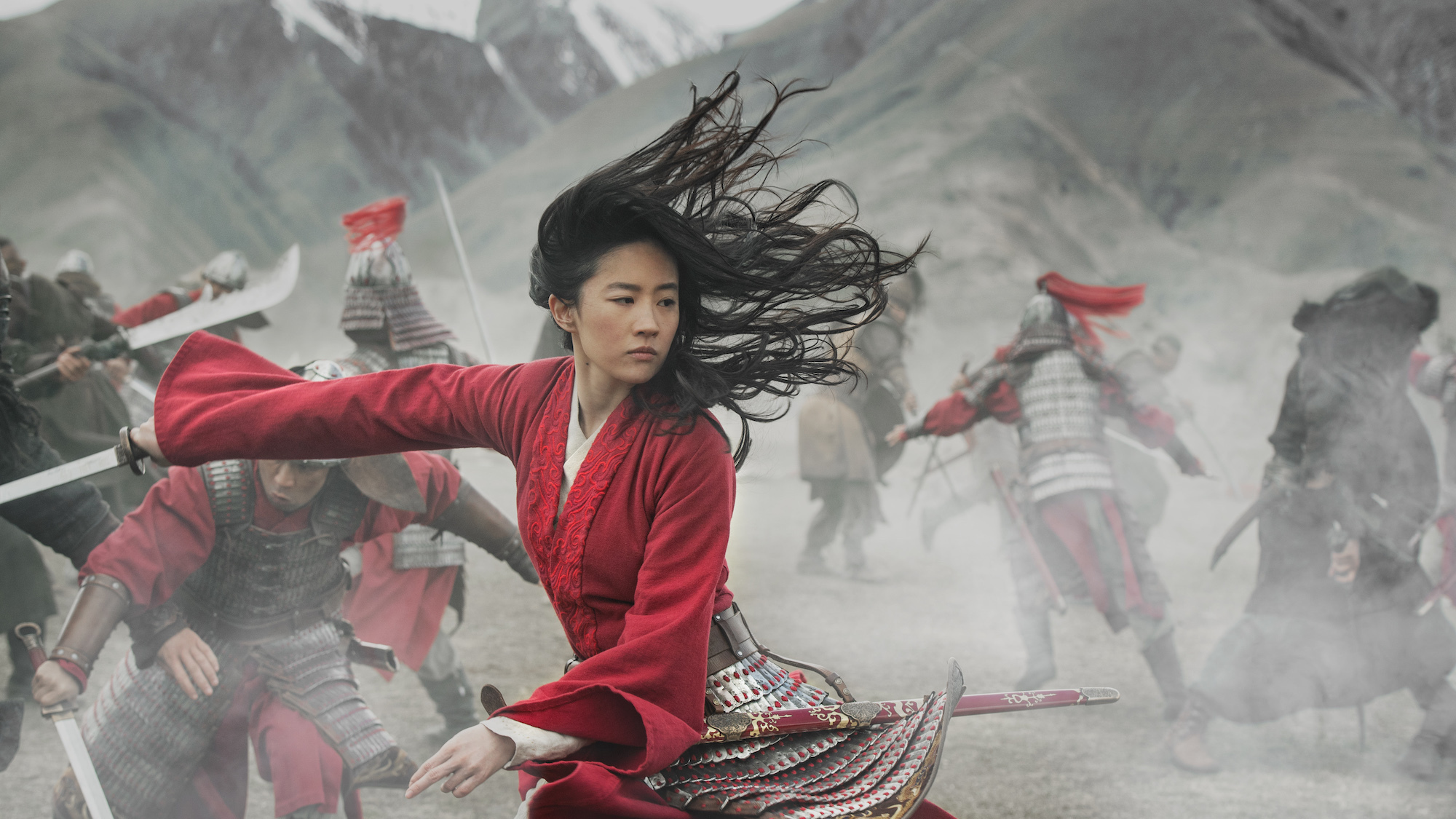Movie review: Live-action ‘Mulan’ fails to develop emotional plots, reflect cultural nuances

(Courtesy of Jasin Boland)
"Mulan"
Directed by Niki Caro
Disney+
Sept. 4

By Alyson Kong
Sept. 8, 2020 2:13 p.m.
Warning: spoilers ahead.
Mulan might have found her true self, but the live-action remake remains a poor “Reflection” of Asian culture and artistry.
Disney’s most recent remake has come a long way since the white-washed 1998 animated version, with the new film featuring an all-Asian cast and some of the biggest names in Chinese cinema. But no amount of celebrity prowess can compensate for the film’s various shortcomings.
As a caveat, live-action remakes often lie in the lingering shadows of comparisons and nostalgia, especially for a movie as successful and familiar as the 1998 “Mulan.” But rather than adhering strictly to the original animation – as seen in the live-action “The Lion King” – the filmmakers instead took many more creative liberties with the plot and characters.
Yet, from an overarching perspective, many of the new story beats are frankly underdeveloped and at times unnecessary.
The main plotline remains the same, as Mulan (Yifei Liu) disguises herself as a man to join the Imperial Army in her father’s place and saves the Emperor (Jet Li). But instead of warring against the Huns, the vengeful leader of the Rouran people, Böri Khan (Jason Scott Lee), takes the villainous role alongside a mystical, metamorphic witch, Xianniang (Li Gong). The new narrative, while initially intriguing, left out crowd-favorites from the animated version such as Li Shang and Mushu, replacing them with two-dimensional characters.
Still, the development of Xianniang is perhaps the most disappointing aspect of the remake given her potential for expansion. Her established motives in the movie are relatively shallow and flawed – Khan outrightly treats her not as his equal but as a dangerous pawn, and her continued support for his coup d’etat showcases a measure of shortsightedness that is at odds with the power she possesses.
Such shaky characterization detracts from the complexity of a character whose origin story could have nearly been a movie of its own. And this lack of deeper context also hinders the connection the movie tries to draw between Xianniang and Mulan – both as outsiders who are trying to find acceptance in their society, yet Mulan offers much more substance behind her actions.
[Related: Movie review: ‘Tenet’ overcomes its flaws, delivers with its action sequences and visceral visuals]
However, one positive to the new narrative of “Mulan” is that it doubles down on the theme of female empowerment. Along with the addition of the formidable Xianniang, Mulan’s arc was altered for the better as she takes the initiative to reveal her true gender to the troops rather than be unwittingly discovered at her lowest point, a move that suitably strengthens her character’s resolve.
And as for the titular role, Liu presents a balanced performance of grit and compassion, and her on-screen chemistry with fellow soldier, Chen Honghui (Yoson An), felt natural and well-paced. But the same could not be said of the other soldiers, whose insufficient development hinders the on-screen camaraderie between Mulan and them.
Whereas the animated version uses musical numbers to help establish secondary characters and beats, the live-action primarily went with instrumental versions of familiar tracks like “Reflection” and “Honor to Us All.” Although the soundtrack suitably enhances the dramatic moments in the script, none felt quite as memorable as the ones in the animation.
But what did make the film noteworthy are the action scenes – largely thanks to the stunt choreography and dynamic camera work. The close-up combat sequences show a well-executed blend of traditional Chinese martial arts and wire fu, while the wide-angle shots and visual effects help convey a sense of epic proportion to the battleground.
Additionally, the cinematography suitably captures a diverse and beautiful range of terrain as well as the massive Imperial City palace and fortifications. But while “Mulan” presents greater geological diversity, some of the Chinese traditions were only superficially explored. The philosophical concept of Qi – which roughly translates to one’s energy flow – is an integral part of Chinese medicine and martial arts, but the film misappropriated this notion as a divisive gendered force.
Another oversight in the film remains in terms of how insular the action is. As a war-centric movie, it does not reflect enough on the consequences of the battles with regards to the greater citizenry. After the exposition, nearly all of the scenes were contained within the army camps and shifting battlegrounds – a constant barrage of training and fighting that connects little to the innocent lives and humanity. As a result, the emotional investment with the victors dwindles as well.
[Related: Movie review: ‘Get Duked!’ falls flat with one-dimensional characters, lacks laugh-out-loud moments]
Ultimately, the crux in Mulan’s story remains closely tied to its reappearing motif of being “loyal, brave and true.” It is a journey of self-discovery and of upholding one’s familial honor – a notion that is tightly interwoven into the fabric of Chinese society even today. Yet the movie doesn’t necessarily push for a strict interpretation of how honor should be attained. Rather the ambiguous ending allows the viewers to surmise their own take on whether Mulan should break the mold to continue pursuing her military career or fulfill her traditional duties as a daughter.
Such ambiguity can be chalked up to the movie’s intent to reach a global audience, but it comes at a cost of authentic Chinese traditions and culture.
It’s commendable that Disney risked so many changes to an iconic film, but many of its efforts in revamping “Mulan” fall short of expectations. The action is entertaining at a glance but lacks emotional stakes, with new characters who are half-baked at best.
Though it satisfies many of the original arcs, the live-action “Mulan” still doesn’t quite manage to capture the Disney magic of its predecessor.

